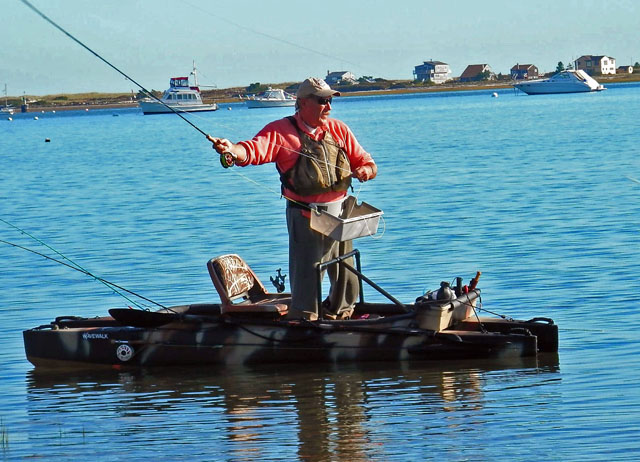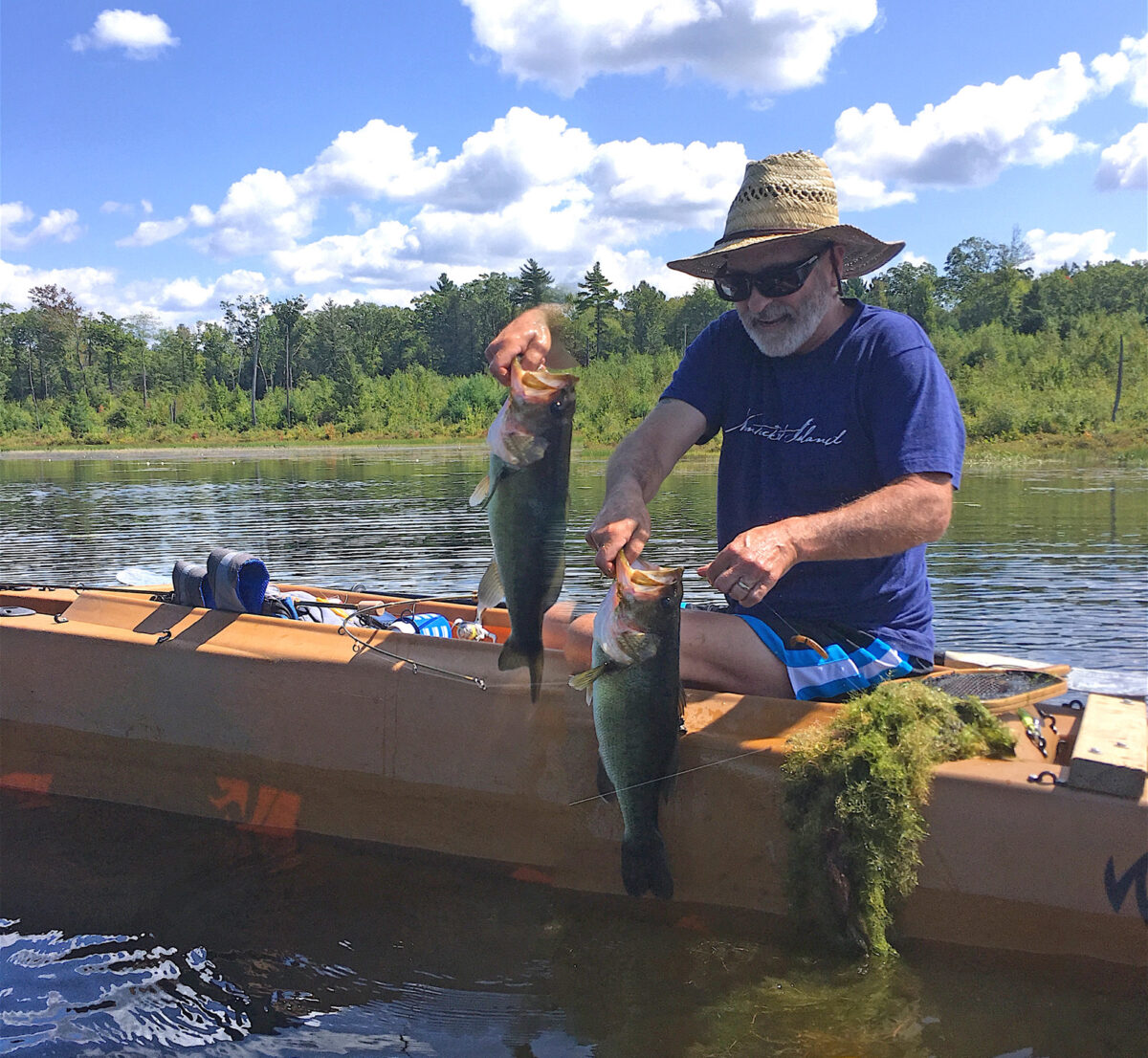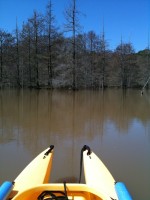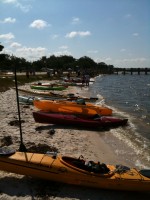Wavewalk Owner Experience
Paul Harrison, Mississippi
Spotted a thread on the Wavewalk and thought I would toss out my experience with it.
I am a 2+ years owner of a model W500 Wavewalk kayak. I am 52 yrs old, about 5’10”, and unfortunately about 200lbs. I am of modest athletic ability. I love the water, paddling, fishing, and also powerboats. I live on a bayou off the Mississippi Sound so I get to paddle 2-3 times a week in the summer and 1-2 times a week in the winter. Not necessarily because it is cold in the winter but because the days are shorter. My kayak is scarred and scratched up but still going strong. I have paddled marsh, bays, swamps, creeks, rivers, lakes, ponds, ditches, and the open MS Sound here in my area.
Stability of the Wavewalk 500 is amazing (and yes stability is important for people that value safety and security and have bills to pay). It is a true catamaran with two full length hulls, that you stand in or sit between, and a center seat or “saddle” about 6ft long (sort of like a jetski seat). My favorite paddling position is standing. I can standup paddle easily for up to about an hour. A favorite is paddling standing up in 2-3 ft waves/rollers just for fun. Get tired or too rough then just sit down. Needless to say, with this stability fishing is easy standing or sitting. Get really tired, make a pillow from a towel and stretch out for a nap (in the kayak). When paddling standing it also easier to sight fish and navigate our marsh grass here in MS. I only paddle sitting to increase speed or due to needing to change posture. No worries either with submerged stumps or logs that used to scare me in a canoe. Just straddle them or shift your weight around until you get over them. It’s like four wheel drive.
The seat/saddle is well above the water. I never wear swim clothes unless I want to swim. No wet feet and no wet butt. Launch without stepping in the water or mud. I can easily “seal launch” straight off the bank if the situation allows. The seat is very comfortable due to being able to change your position very easily. My limit on being on the water is how long do I want to paddle, not how does my back feel or am I tired of being wet. Four to six hours would be no problem with enough food and water. I also like being up out of the water due to presence of gators in areas I paddle. I want that extra distance and separation, and not having my elbows/hands so close to the water!
It is very easy to maneuver. Need to turn short? sit toward the back of the saddle so that the front tips of the hull are out of the water and it turns on a dime. Want to track? Sit toward the middle and it goes straight and cuts into wind or current without a separate rudder. In a tight spot? Turn your body on the saddle 180 degrees and paddle it out “backwards” (it doesn’t have a true stern or bow). It paddles very efficiently in my opinion with good carry/momentum from each stroke. I am not a racer mind you but I have also not had that “barge” feeling.
The kayak is super easy to rig, easy to carry, easy to transport. I can carry a lot more stuff than I need, and I usually do.
That’s enough … sorry for going on but it is the best recreation and exercise dollar I have spent in a long time. I don’t have anything negative to say about any other machine because I have not used them! Just know what has worked for me.
Click images to enlarge






